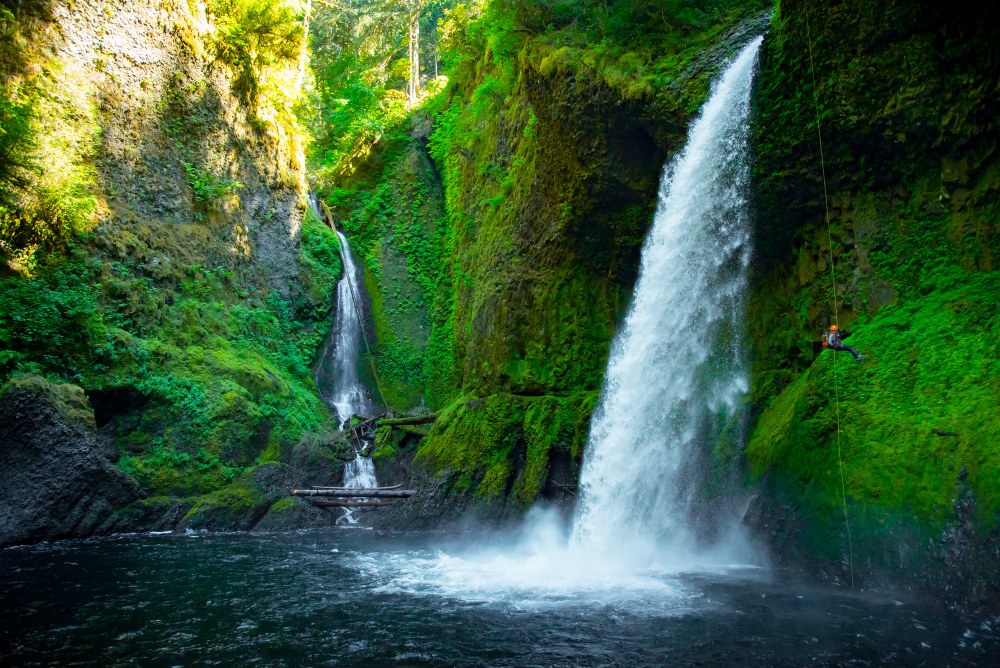
Anticipation
7:30am. Everyone in our canyoning group is finishing up their breakfast at the Mt. Adams Cafe in Randle, Washington. It’s a lot of food for seven people. Calories are key. Pancakes, bacon, and giant omelets fill our faces, as we try to find the balance between too much and too little.
Anticipation is high. We have two big canyons on our itinerary that we’ve been talking about for months. Davis Creek and Big Creek, two slot canyons in the Gifford Pinchot National Forest between Mt. Rainier and Mt. St. Helens. We know water levels are high, but just how high we are not yet sure of. We’ve picked our team carefully, as everyone must be on their A-game and know how to perform in potentially high risk scenarios.
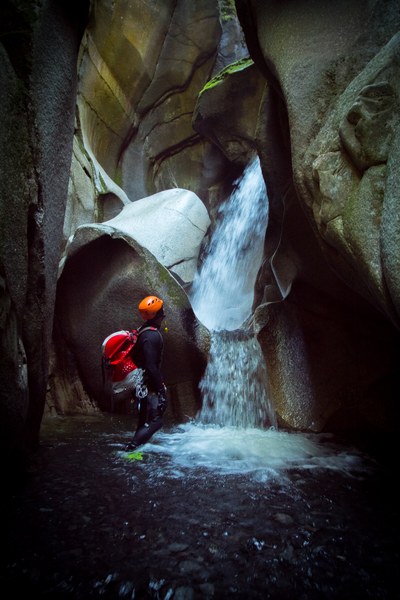
What is Canyoning?
Canyoning in the Pacific Northwest is a relatively young activity. The number of active canyoneers is small, and the training resources even more so. The sport involves many different disciplines, primarily rigging and ropework, to allow rappelling through waterfalls, swimming through pools, creek-walking, hiking, climbing, and more. Wetsuits are usually worn, as well as helmets, harnesses, and shoes with grippy rubber designed to stick even on the most slippery surfaces. If you want to escape the crowds and see some remote and beautiful places, canyoning is a great way to do so.
Exploring slot canyons is very popular in the American southwest in places such as Zion National Park in Utah, and the Grand Canyon in Arizona. However, the majority of these canyons have little to no flowing water. Often the challenge comes in finding creative ways to build anchors using minimal materials, and escaping deep pools called potholes with specialized techniques. Canyons in the PNW are primarily aquatic, or ‘c-class’ canyons, with significant water flow year round. This water flow is an added level of risk that requires an additional set of skills and a keen sense of adventure.
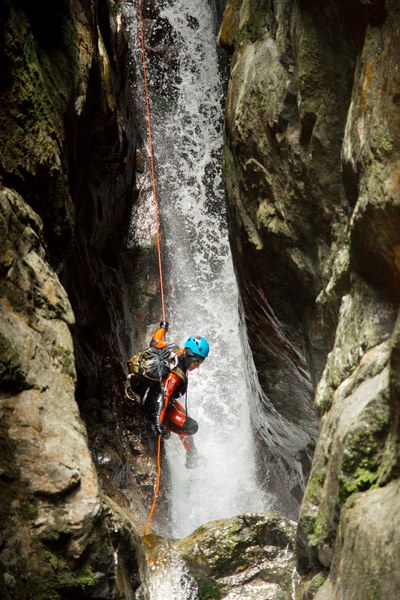
Starting the Season
Prime time for canyoning in the PNW is from June through September. The rest of the year, water levels are often dangerously high, the weather too cold, or the canyons difficult to access. During each winter and spring, flooding from constant rains and melting snow can drastically alter a canyon. Logjams wash away, new ones form, and webbing and bolts can be damaged and need replacing. As potentially the first group of the season through a canyon, a group must be prepared for new challenges and to spend time replacing anchors.
Descent
Davis Creek, our Saturday canyon, was running high, but not as high as we had anticipated. This meant that we could relax a bit and not be as concerned about dangerous hydraulics in the pools. One large logjam had been drastically changed with far fewer logs, and a pool that had been deep enough to jump before was now filled in with gravel and debris. We found a large log with a webbing anchor about 50 yards down canyon from its original location, a testament to the power of the floodwaters that fill these narrows gorges.
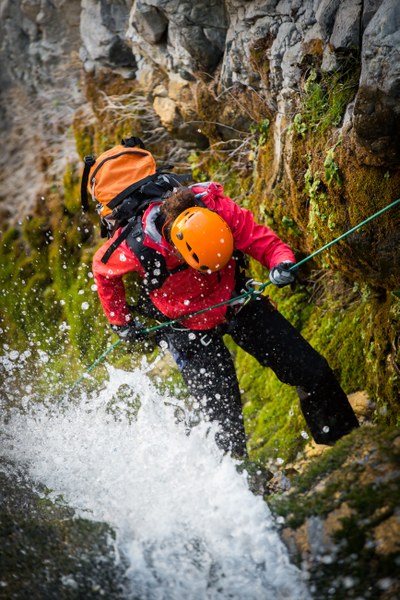
The next day we tackled Big Creek, by far one of the best canyons in the region. Deep channels carved into the rock, large pools, rappels with spectacular views. We took our time enjoying the canyon, and added a few bolts to the last rappel, a spectacular drop down a chute into a cave-like bowl. A satisfying end to a great weekend.
Looking Ahead
The canyoning community in the PNW is small but growing, and more canyons are being explored and published all the time.
If you are interested in canyoning, there are instructional courses available through The Mountaineers and The Mazamas in Portland. There are also many training courses and guiding companies in Colorado, southern Utah, Arizona, and southern California. Experience in caving, mountaineering, and climbing provides a good foundation, although it is highly recommended to learn canyon specific skills from an experienced instructor or mentor.
Canyoning season in the Pacific Northwest is in full swing. If you choose to get out and explore a canyon, stay safe out there, and don’t forget to follow Leave No Trace Ethics. And, don’t forget to look around at where you are. Sometimes it’s easy to forget to look up. Happy canyoning!
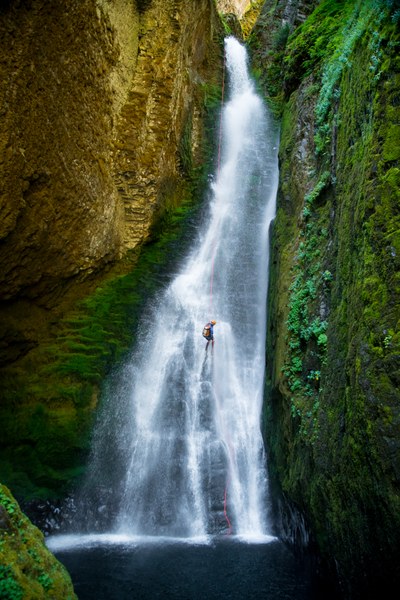
Add a comment
Log in to add comments.Jake your photos are stunning!
Thank you Tess!
Just completed the Basic Canyoning Course with Jake and Stephanie Moe (with assists from Alex and Logan). ABSOLUTLEY FANTASTIC! I had no canyoning experience and only very basic rock climbing skills, and still felt safe and increasingly confident that I could complete the course. Instructors were great, course flowed logically, and the community of folks looking to help you safely succeed is amazing. I was surprised at how intellectually stimulating canyoning is, and how much I enjoyed the moments in-betweem rappels when I was able to gaze close-up at waterfalls. If you are willing to put in the time to prepare and check your ego at the trailhead, are a great listener and even better team player, and want to experience the outdoors in a way that so few others do, then I couldn't recommend canyoning more!
 Jake Huddleston
Jake Huddleston